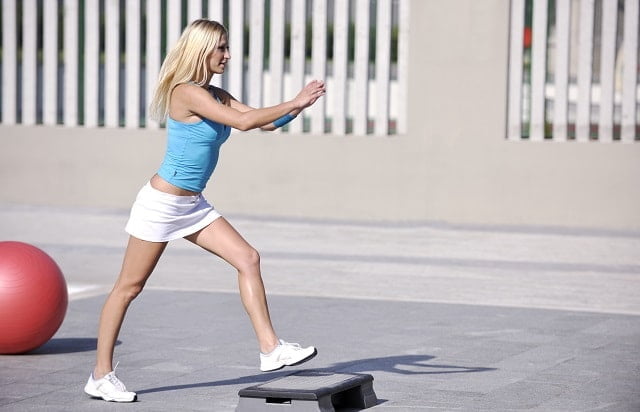How exercise can enhance neuromuscular connections and improve motor fitness is a topic of growing interest in the field of health and wellness. Neuromuscular connections play a crucial role in the body’s ability to move efficiently, while motor fitness encompasses physical abilities such as coordination, balance, and agility. In this article, we will explore the impact of exercise on these areas and how targeted workouts can lead to significant improvements.
When it comes to neuromuscular connections, exercise has been shown to have a profound effect on enhancing the communication between the nervous system and muscles. Through targeted exercises, individuals can improve their body’s ability to efficiently execute movements, leading to increased overall performance in various activities. Similarly, motor fitness, which includes skills like balance, coordination, and agility, can be significantly enhanced through consistent physical activity.
As we delve into this topic further, we will discuss the specific benefits associated with improved neuromuscular connections and motor fitness. Furthermore, we will explore different types of exercises that have been proven effective in targeting these areas and provide practical tips for incorporating them into a regular fitness routine. Join us as we uncover the fascinating connection between exercise and enhancing neuromuscular connections along with improving motor fitness.
Neuromuscular Connections
Exercise plays a crucial role in enhancing neuromuscular connections. Through repetitive and targeted movements, the nervous system becomes more adept at signaling the muscles to contract and relax efficiently. This leads to improved coordination, balance, and proprioception. Activities such as resistance training, plyometrics, and agility drills specifically target neuromuscular connections, promoting their development and refinement.
Resistance training is a highly effective method for enhancing neuromuscular connections due to the varied range of motion and muscle engagement involved. Plyometric exercises, which involve rapid stretching and contracting of muscles (such as jumping), also contribute to improved neuromuscular efficiency.
Additionally, agility drills that require quick changes in direction and speed stimulate the nervous system to adapt and respond rapidly, ultimately improving neuromuscular connections. Incorporating these exercises into a regular fitness routine can lead to significant enhancements in motor fitness and overall physical performance.
Motor Fitness
There are several types of exercises that have been shown to enhance motor fitness:
- Yoga: Yoga involves various poses and movements that require balance, flexibility, and controlled breathing. These practices can greatly improve coordination and help individuals develop a greater awareness of their bodies.
- Pilates: Pilates focuses on building strength, flexibility, and endurance through precise movements. By performing Pilates exercises regularly, individuals can improve their posture and overall body control.
- Functional Movements: Functional movements are exercises that mimic everyday activities such as squatting, lifting, pushing, or pulling. Engaging in these movements helps to improve overall coordination and motor skills.
Incorporating these exercises into a regular fitness regimen can lead to significant improvements in motor fitness over time. Whether it’s through the fluidity of movement in yoga, the precision of Pilates, or the practicality of functional movements, individuals can enhance their ability to perform physical tasks with greater ease and efficiency through targeted exercise routines.
Benefits of Enhanced Neuromuscular Connections
Enhanced neuromuscular connections play a crucial role in overall physical performance and function. When the communication between the nervous system and muscles is optimized, individuals experience improved coordination, strength, and flexibility. This section will delve into the specific benefits of enhanced neuromuscular connections and how exercise facilitates these improvements.
One of the key benefits of enhanced neuromuscular connections is improved coordination and stability. When the brain effectively communicates with the muscles, movements become more precise and controlled. This not only enhances performance in physical activities such as sports or dance but also reduces the risk of injury due to improved stability. Engaging in exercises that specifically target neuromuscular connections, such as balance exercises or agility drills, can significantly enhance these aspects of motor fitness.
Enhanced neuromuscular connections also result in increased strength and power. When the neural pathways are optimized through exercise, muscles are activated more efficiently, leading to greater force production during physical activities. This is especially beneficial for athletes looking to improve their performance in sports that require high levels of strength and power, such as weightlifting or sprinting. Resistance training is particularly effective in enhancing neuromuscular connections to promote gains in strength and power.
Another important benefit of enhanced neuromuscular connections is a reduced risk of falls, particularly in older adults. As individuals age, declines in neuromuscular function can lead to issues with balance and coordination, increasing the likelihood of falls which can result in serious injuries. By engaging in exercises that enhance neuromuscular connections, such as targeted balance exercises, older adults can improve their overall stability and reduce the risk of falls, ultimately contributing to better quality of life.
Benefits of Improved Motor Fitness
Improved motor fitness, which refers to the combination of strength, coordination, and balance necessary for efficient movement, is a crucial aspect of overall physical health. Engaging in regular exercise can significantly enhance motor fitness and lead to a variety of benefits for individuals of all ages and abilities.
Benefits of Improved Motor Fitness
- Enhanced coordination and agility
- Increased strength and endurance
- Better balance and stability
- Improved posture and flexibility
- Reduced risk of injuries related to falls or accidents
- Enhanced performance in sports and physical activities
Research has consistently shown the positive correlation between exercise and improved motor fitness. Regular physical activity, including both aerobic and resistance training, has been linked to enhancements in motor skills such as hand-eye coordination, reaction time, and fine motor control.
Individuals who have integrated targeted exercises into their fitness routine have reported personal anecdotes of significant improvements in their motor skills. Whether it’s being able to perform daily tasks with greater ease or excelling in specific sports or hobbies, the impact of improved motor fitness through exercise is undeniable.
Types of Exercises for Enhancing Neuromuscular Connections
Neuromuscular connections play a crucial role in the body’s ability to move efficiently and effectively. When these connections are enhanced, individuals can experience improvements in strength, power, and overall motor performance. One type of exercise that has been shown to be particularly effective in enhancing neuromuscular connections is resistance training. This form of exercise involves using external resistance, such as dumbbells, barbells, or resistance bands, to strengthen muscles and improve coordination.
Another type of exercise that targets neuromuscular connections is balance exercises. These exercises challenge the body’s stability and proprioception, which are essential for maintaining proper neuromuscular function. Examples of balance exercises include single-leg stands, stability ball exercises, and yoga poses that require focus and concentration.
Agility drills are also beneficial for enhancing neuromuscular connections. These drills involve quick changes in direction, speed, and coordination, which can help improve the communication between the nervous system and muscles. Incorporating exercises like ladder drills, cone drills, and shuttle runs into a workout routine can have significant benefits for neuromuscular enhancement.
Incorporating these types of exercises into a regular fitness regimen can help individuals not only improve their physical performance but also enhance their overall quality of life. By prioritizing activities that target neuromuscular connections, individuals can experience greater strength, improved coordination, and reduced risk of injury.
| Exercise Type | Benefits |
|---|---|
| Resistance Training | Strengthens muscles and improves coordination |
| Balance Exercises | Challenges stability and proprioception for better neuromuscular function |
| Agility Drills | Improves quick changes in direction, speed, and coordination |
Types of Exercises for Improving Motor Fitness
Motor fitness, also known as motor skill or coordination, is an essential aspect of overall physical health and functionality. Fortunately, there are numerous exercises that can specifically target and improve motor fitness. Yoga is one such exercise that focuses on balance, flexibility, and strength, all of which are crucial components of motor fitness. By incorporating yoga into a regular fitness routine, individuals can enhance their motor skills while also experiencing the mental and emotional benefits of this holistic practice.
Pilates is another form of exercise that emphasizes core strength, stability, and control. These elements are fundamental to improving motor fitness as they directly impact a person’s ability to move with accuracy and precision.
Functional movements such as squats, lunges, and deadlifts not only enhance overall strength but also promote balance, coordination, and agility. By incorporating these movements into a workout regimen, individuals can effectively improve their motor fitness while also reaping the benefits of increased muscle tone and endurance.
Incorporating these exercises into a regular fitness routine does not have to be complicated or time-consuming. By dedicating just 20-30 minutes a few times per week to practices such as yoga or Pilates, individuals can significantly improve their motor fitness over time.
Furthermore, by integrating functional movements into resistance training workouts, individuals can simultaneously enhance muscular strength and coordination. Overall, prioritizing these types of exercises can lead to significant improvements in motor fitness and contribute to an individual’s overall physical well-being.
| Exercise Type | Description |
|---|---|
| Yoga | Focused on balance, flexibility, and strength; enhances overall coordination. |
| Pilates | Emphasizes core strength, stability, and control; improves precision in movement. |
| Functional Movements | Including squats, lunges, deadlifts; promotes balance, coordination, agility. |
Conclusion
In conclusion, the relationship between exercise, neuromuscular connections, and motor fitness is a crucial component of overall health and well-being. As discussed in this article, exercise plays a significant role in enhancing the communication between the nervous system and muscles, ultimately leading to improved motor skills and coordination. By participating in targeted exercises that focus on neuromuscular enhancement and motor fitness, individuals can experience a wide range of benefits that positively impact their daily lives.
It is evident from scientific evidence and real-life examples that engaging in regular physical activity can lead to enhanced neuromuscular connections and improved motor fitness. Whether it’s through resistance training, balance exercises, agility drills, yoga, Pilates, or functional movements, there are various types of exercises that can effectively contribute to these enhancements. Therefore, it is essential for individuals to prioritize exercise as a means to support their neuromuscular and motor fitness.
As we conclude, it is important to emphasize the significance of incorporating targeted exercises into one’s fitness routine. By taking proactive steps to enhance neuromuscular connections and improve motor fitness through exercise, individuals can experience improvements in movement control, strength, flexibility, and overall physical performance. Therefore we encourage all readers to take action today by integrating these specific exercises into their workout regimens for long-term health benefits.
Frequently Asked Questions
How Can I Improve My Neuromuscular Connection?
Improving your neuromuscular connection can be achieved through a variety of methods, such as practicing specific movement patterns, focusing on proper form and technique during exercises, and incorporating balance and stability exercises into your workout routine. Additionally, engaging in activities that challenge the mind-body connection, such as yoga or tai chi, can also help enhance your neuromuscular coordination.
How Does Improve Neuromuscular Coordination Benefit Exercise Performance?
Improved neuromuscular coordination can greatly benefit exercise performance by enhancing muscle recruitment, increasing strength and power output, and reducing the risk of injury. When the brain effectively communicates with the muscles, movements become more efficient and precise, resulting in better overall athletic performance.
What Exercises Are Used to Improve Neuromuscular Control?
A wide range of exercises can be used to improve neuromuscular control, including balance exercises like single-leg stance or stability ball exercises, resistance training with a focus on proper form and technique, agility drills that challenge coordination and quick movement patterns, and functional movements that mimic real-life activities to engage multiple muscle groups simultaneously.
Furthermore, incorporating activities like dance or martial arts into your fitness routine can also help improve neuromuscular control through their focus on coordination and body awareness.

Passionate about providing useful information to anyone with an interest in the field of Personal Training, I strive to pass on to our readers quality information and to answer any questions about Personal Trainers, the work they do and how to become one.





